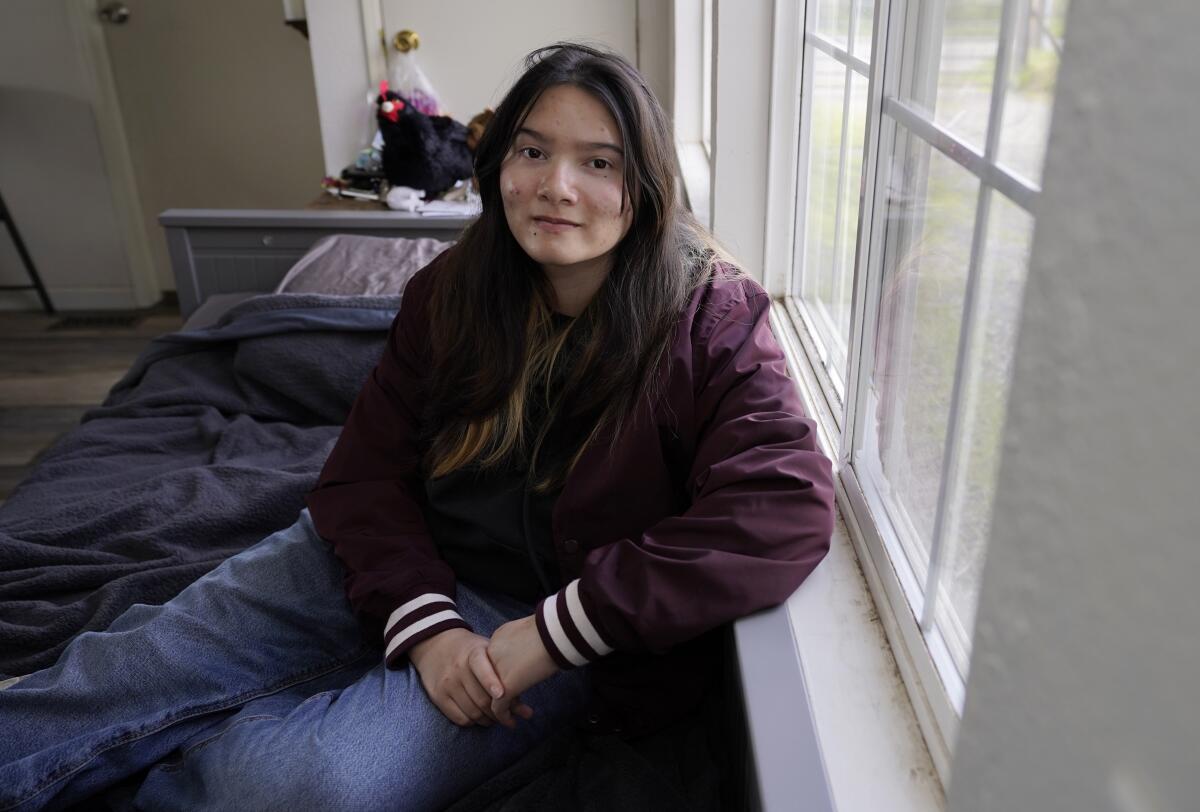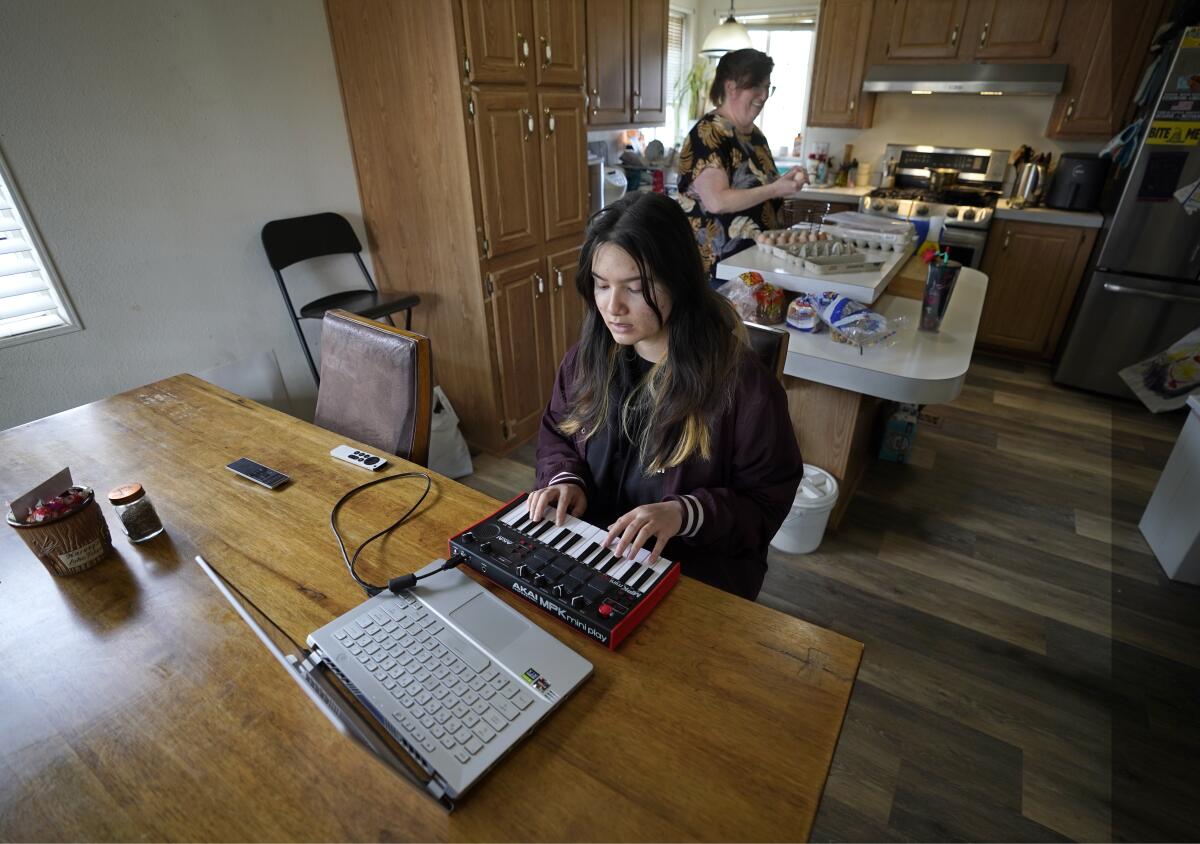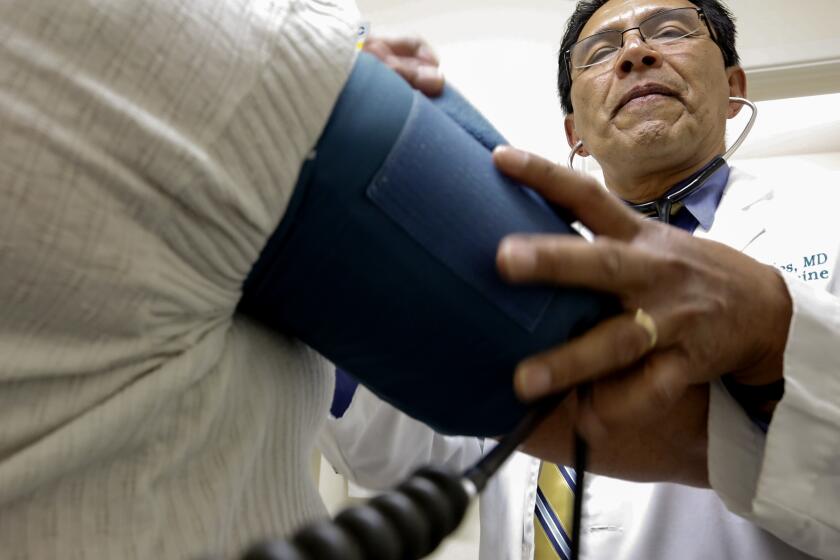For this California teen, coverage of early psychosis treatment proved a lifesaver

SACRAMENTO — Summer Oriyavong first heard the ringing bells and tapping sounds in her head when she was in middle school. Whispering voices and shadowy visions, ones that made her feel superior and special, soon followed.
It wasn’t until Summer ran out of her classroom in terror one day that her teachers and parents realized she needed help they couldn’t provide. The shadow people were telling Summer that her classmates were going to hurt her.
“It felt like the hallucinations were my friends, so it didn’t feel lonely,” said Summer, now a junior at an independent study high school in Sacramento County. “It just felt scary.”
The 16-year-old from Rio Linda, a suburb of Sacramento, was the fortunate beneficiary of what her mom described as lifesaving mental health care from an early psychosis program at UC Davis, covered largely by Medi-Cal, California’s version of Medicaid. The UC Davis program offers intensive treatment that doctors hope will enable people with severe mental illness to live normal lives — and save taxpayers money that might otherwise be spent on costlier, emergency interventions.
Summer is among as many as 2 million people in the United States with schizophrenia, a brain disorder with symptoms that can include delusions, hallucinations, disorganized speech and trouble thinking.
The life of a 31-year-old living with schizophrenia illustrates the toll of illness and the challenge of getting severely mentally ill people off the streets.
More than half of Americans who suffer from schizophrenia or another mental illness didn’t get the care they needed in 2021, according to the National Alliance on Mental Illness, an advocacy group. Commercial insurance plans are not required to cover the type of specialty care recommended by the National Institute of Mental Health for severe mental illness, and most do not.
Federal law requires states to provide mental health treatment to Medicaid enrollees under 21, and a few places, such as New York and Texas, have statewide programs.
In California, the level of care can depend on where you live because counties are charged with providing specialty care for people with severe mental illness who are enrolled in Medi-Cal. And counties parcel out funding in different ways. (Medi-Cal insurers, which serve roughly 15 million people with low incomes or disabilities, cover treatment for mild to moderate mental health conditions such as anxiety.)
“This care is not available to all Californians,” said Tara Niendam, executive director of UC Davis Early Psychosis Programs and a leader in a state effort to set up programs elsewhere. “Summer is lucky she was on Medi-Cal and she lived in Sacramento County.”
The UC Davis program costs more than Medi-Cal pays, and Sacramento County taps state and federal grant funding to cover the difference. As of last year, 41% of California counties now have early psychosis programs or were developing them, Niendam said.
California will soon require Medi-Cal recipients to prove their eligibility again. But it has a safety net for people who lose their coverage.
During her two-year stint with the UC Davis EDAPT clinic, Summer went through coordinated specialty care for early psychosis, treated by a team of psychiatrists, therapists, educational specialists, and peer and family advocates. She was often at the clinic two to three times a week — more if she was going through a bad stretch, like cutting herself or stealing Benadryl to overdose.
Summer didn’t have to pay for any of it, including her two stays at mental health hospitals and another at a local intensive care unit. Her mother, Sheri Oriyavong, never had to negotiate coverage. Without Medi-Cal and Sacramento County paying the bills, “it would just be too much,” she said.

In most cases, schizophrenia first appears in men during their late teens or early 20s. In women, it often strikes during their 20s or early 30s. Research shows that early interventions, including medications and therapy, make a big difference in people’s ability to manage their symptoms.
Extending such treatment to the estimated 27,000 Californians expected to develop psychosis each year remains a massive undertaking, with only a tenth as many slots available statewide, Niendam told lawmakers at an Assembly budget hearing in mid-April. How much it would cost is unclear, and the state Mental Health Services Oversight and Accountability Commission, MHSOAC, is seeking the go-ahead from the legislature to map out costs and benefits.
Advocates believe taxpayers will save money in the long run by helping patients hold down a job and avoid becoming homeless.
“It would be an investment upfront, but it would be a savings down the road,” said Kerry Ahearn, chief executive officer of Aldea Children & Family Services, a nonprofit that provides specialty mental health services in Napa, Solano and Sonoma counties. “People used to think people with psychosis were one in a million and it’s so severe you can’t treat it. It’s not true.”
A list of crisis hotlines, low-fee and sliding scale counseling, support groups, and mindfulness and meditation services
A small, state-funded pilot project at Kaiser Permanente aims to demonstrate that coverage of severe mental health problems can also save health plans money.
“The hypothesis is that by helping the client manage their psychosis, they’ll better manage their diabetes, for example,” said Toby Ewing, executive director of MHSOAC. “And so total healthcare costs actually will go down.”
Now that Summer has learned how to recognize her triggers and symptoms, she’s on track to graduate high school a semester early. She’s thinking about getting a job and attending community college.
“I used to think that people who are schizophrenic, they wouldn’t live normal lives, even that people would be scared of them,” Summer said. “But actually, they can live just like normal people.”
This article is part of “Faces of Medi-Cal,” a California Healthline series exploring the impact of the state’s safety-net health program on enrollees.
This article was produced by KFF Health News, which publishes California Healthline, an editorially independent service of the California Health Care Foundation.









